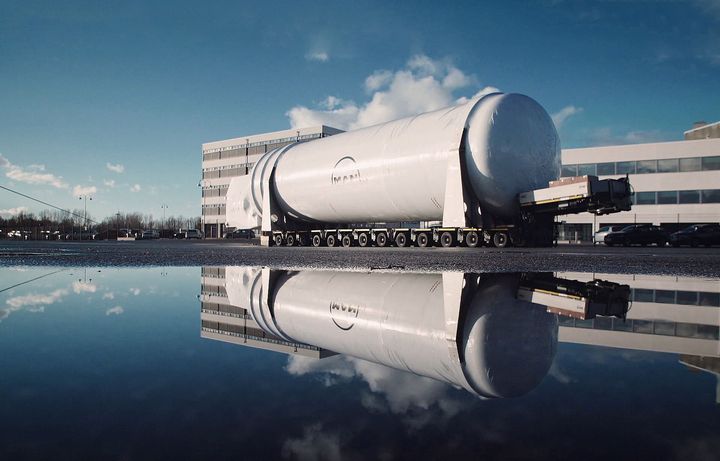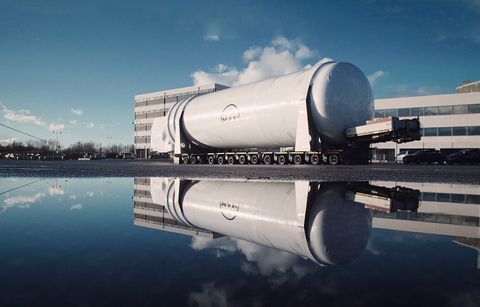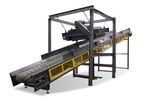
Cryogenic Tank Overview: Explore Key Facts, Working Principles, and Industrial Applications
A cryogenic tank is a specially designed vessel built to store and transport liquids at extremely low temperatures (usually below –150 °C), such as liquefied natural gas (LNG), liquid nitrogen, liquid oxygen, or liquid argon. These tanks exist because many industrial and scientific processes require substances in liquid form at very low temperatures. At these temperatures, materials behave differently—gases become liquids—enabling efficient transport, storage, and use of large volumes of gaseous materials.
Cryogenic tanks are engineered to manage the challenges of low temperatures, high pressures, and the need to minimize heat ingress and liquid loss. When gases like nitrogen, oxygen, or natural gas are cooled and pressurized, they shrink in volume and become liquids. Cryogenic tanks make it practical to store and move these liquids safely until they are needed.
Importance
Cryogenic tanks play a crucial role across multiple industries.
-
Energy sector: With the rapid growth of LNG and hydrogen-based energy systems, cryogenic storage has become essential for energy infrastructure worldwide.
-
Industrial manufacturing: Many processes require liquid nitrogen or oxygen for cutting, welding, metal processing, or electronics production.
-
Healthcare and research: Liquid oxygen and nitrogen are indispensable for medical treatments, cryopreservation, and laboratory applications.
-
Efficiency and safety: Without cryogenic tanks, storing or transporting these materials would be inefficient, unsafe, and costly. Tanks minimize losses, maintain purity, and ensure pressure control.
These tanks impact industries such as energy production, chemicals, healthcare, transport, and logistics. With the global move toward cleaner fuels and advanced technologies, cryogenic storage is becoming even more significant.
Recent Updates
As of 2024–2025, several key trends define the cryogenic tank industry:
-
The global market for cryogenic tanks is projected to grow steadily, reaching nearly USD 15 billion by 2035.
-
The Asia-Pacific region leads production and usage, driven by LNG imports, clean energy projects, and industrial growth.
-
New materials and insulation technologies are improving efficiency and reducing boil-off losses.
-
Hydrogen storage and carbon capture are emerging fields where cryogenic systems are gaining new applications.
-
Governments and research institutions are emphasizing safety standards and environmental performance, with more detailed design codes and inspection requirements.
Below is a simplified table summarizing global market projections:
| Year | Estimated Market Size (USD Billion) |
|---|---|
| 2024 | ~7.1 billion |
| 2025 | ~9.2 billion |
| 2035 | ~15.8 billion |
This growth reflects expanding use of liquefied gases, increased demand for energy storage, and innovation in cryogenic technologies.
Laws or Policies
Cryogenic tanks are governed by strict regulations because of their potential safety risks. The key legal and policy frameworks include:
-
Gas Cylinders Rules (2004): Governs cryogenic cylinders with smaller capacities (below 1000 litres) and pressure above 1.5 bar.
-
Static and Mobile Pressure Vessels (Unfired) Rules (2016): Applies to larger storage vessels, setting design, testing, and inspection standards.
-
Petroleum and Natural Gas Regulatory Board (PNGRB) LNG T4S Regulation: Defines minimum technical and safety standards for LNG storage and handling.
-
Medical Oxygen Storage Guidance: Provides procedures for installation, approval, and maintenance of cryogenic liquid oxygen systems in healthcare facilities.
-
Industry Standards (IS 18719): Specifies design, fabrication, inspection, and test requirements for vacuum-insulated transportable cryogenic vessels.
These rules ensure that cryogenic systems are designed and operated safely. They also standardize approvals, certifications, and quality control during manufacturing and operation. Non-compliance can result in serious safety hazards such as pressure failure, leaks, or explosions.
Tools and Resources
Professionals working with cryogenic systems can refer to several useful resources:
-
Safety Guidelines: Institutional safety manuals for handling cryogenic materials, including safe operation, ventilation, and protective equipment.
-
Industry Standards: Specifications and codes outlining vessel design, insulation, pressure testing, and maintenance.
-
Technical Documents: Manuals explaining best practices for cryogenic gas transfer, venting, and filling procedures.
-
Training Resources: Online modules or courses covering cryogenic safety, material behavior, and regulatory compliance.
-
Calculation Tools: Engineering spreadsheets for estimating boil-off rates, insulation thickness, or vacuum performance.
Such resources help maintain compliance, improve operational efficiency, and ensure safety in cryogenic storage and transport.
FAQs
Q1: What is the working principle of a cryogenic tank?
A: A cryogenic tank operates on the principle of vacuum and multilayer insulation. The inner vessel holds the liquid at low temperature, while an outer shell creates a vacuum barrier to reduce heat transfer. Pressure relief valves control boil-off gas if the liquid starts to evaporate, maintaining safe conditions.
Q2: Which liquids are typically stored in cryogenic tanks?
A: Common cryogenic liquids include nitrogen, oxygen, argon, liquefied natural gas (LNG), and hydrogen. The choice depends on temperature range, end use, and safety requirements.
Q3: What are the main risks of using cryogenic tanks?
A: Key risks include:
-
Over-pressure due to vapor build-up
-
Cold burns and frostbite from accidental contact
-
Asphyxiation hazards from gas leaks
-
Structural stress or cracking caused by extreme cold
Proper design, insulation, and monitoring systems minimize these risks.
Q4: How can compliance be verified?
A: Compliance can be checked by verifying certification under national standards, inspection records, and approval from authorized safety organizations. Tanks must have valid test certificates, identification plates, and proof of regulatory clearance.
Q5: What differentiates stationary cryogenic tanks from transport tanks?
A: Stationary tanks are fixed installations used for long-term storage at industrial sites or hospitals. Transport tanks are mobile units (trailers or containers) designed for road, rail, or marine transport, equipped with additional safety and stability features.
Conclusion
Cryogenic tanks are an essential component of modern industry, enabling safe storage and transportation of extremely cold liquids used in energy, manufacturing, healthcare, and research. Their design combines advanced insulation, pressure control, and material engineering to maintain low temperatures and prevent losses.
As the world moves toward sustainable energy and advanced gas-based systems, cryogenic tanks will continue to evolve with better insulation, lighter structures, and enhanced monitoring technologies. Regulatory frameworks ensure that safety remains a priority, while innovation opens new possibilities in hydrogen energy, carbon capture, and other emerging applications.
Cryogenic technology demonstrates how precise engineering and safety design make it possible to handle substances that would otherwise be too volatile or cold for practical use—forming a vital bridge between energy innovation, industrial efficiency, and global sustainability.






